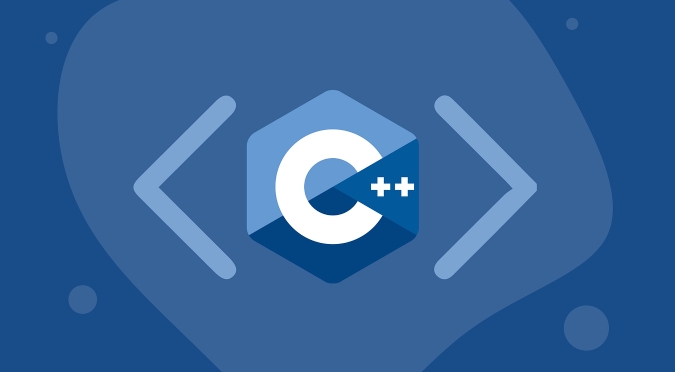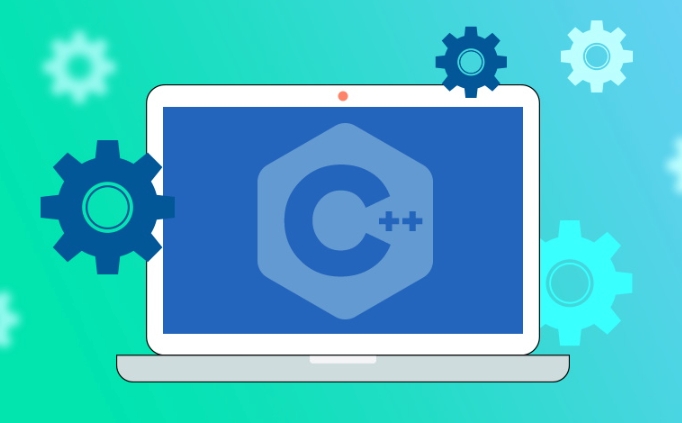C The method to implement serialization includes manual implementation and use of third-party libraries. Manual implementation is suitable for simple structures. You need to read and write byte streams in the order of fields, pay attention to string boundaries and cross-platform issues; common steps: 1. Write object fields into byte streams in sequence 2. Read in the same order when deserializing 3. You need to record the length or ending characters when processing strings 4. Consider the differences in byte order and alignment. Use third-party libraries to suit complex needs. Common solutions: 1. Boost.Serialization supports multiple formats but depends on Boost 2. protobuf is efficient across languages, suitable for communication and persistence 3. FlatBuffers directly access data without parsing 4. MessagePack is lightweight and cross-platform; taking protobuf as an example process as defining.proto files, generating code, and calling class methods to complete serialization/deserialization. Notes include version compatibility, data security, performance optimization and readability selection.

C itself does not have a built-in serialization mechanism like Java or Python, but through some common methods, we can implement persistent storage or network transmission of object state. The key is to understand the purpose of serialization and choose the appropriate implementation method.

What is serialization?
Serialization refers to converting the state of an object into a form that can be stored or transferred (such as binary, JSON, XML, etc.). In C, this process is usually implemented manually, or done with the help of a third-party library.
How to manually implement basic serialization?
If you only need to deal with simple data structures, writing serialization and deserialization functions manually is a viable option.

- Basic idea : Write each field of the object into a byte stream in sequence (such as
std::ofstream) and read it in the same order when deserialized. - Note the field order : the field order must be consistent during serialization and deserialization, otherwise the data will be incorrect.
- Be careful when processing strings : strings need to record length or end with
\0, otherwise the boundary cannot be judged during reading. - Consider cross-platform issues : for example, different systems may have different endian orders (big endian/little endian), and the structure alignment may also be different.
For example, a simple structure:
struct Person {
int age;
std::string name;
void serialize(std::ostream& os) const {
os.write(reinterpret_cast<const char*>(&age), sizeof(age));
uint32_t len = name.size();
os.write(reinterpret_cast<const char*>(&len), sizeof(len));
os.write(name.data(), len);
}
void deserialize(std::istream& is) {
is.read(reinterpret_cast<char*>(&age), sizeof(age));
uint32_t len;
is.read(reinterpret_cast<char*>(&len), sizeof(len));
name.resize(len);
is.read(&name[0], len);
}
};Use third-party libraries to simplify operations
For more complex requirements, such as nested structures, cross-language compatibility, network communication, etc., it is recommended to use existing serialization libraries.

Common C serialization libraries include:
- Boost.Serialization : Powerful, supports multiple formats, but relying on the Boost library, the compilation may be heavier.
- Google Protocol Buffers (protobuf) : Good cross-language support, high efficiency, suitable for network communication and persistence.
- FlatBuffers : Access serialized data without parsing, suitable for performance-sensitive scenarios.
- MessagePack : JSON-like binary format, lightweight and cross-platform.
A simple process to use protobuf:
- Define the
.protofile description structure - Use protoc to compile and generate C code
- Serialization/deserialization using generated classes
For example:
message Person {
int32 age = 1;
string name = 2;
}Then:
Person person;
person.set_age(25);
person.set_name("Tom");
std::string buffer;
person.SerializeToString(&buffer); // Serialize Person p2;
p2.ParseFromString(buffer); // DeserializationIssues to be aware of
When using serialization, some details are easily overlooked but are important:
- Version compatibility : If the structure changes (such as adding and deleting fields), make sure that the old data can be correctly parsed by the new code.
- Security : Don't blindly trust deserialized data, especially when it comes from the network, to prevent malicious input.
- Performance : For large amounts of data or high frequency operations, select efficient serialization formats and libraries.
- Readability : If you need debugging or manual viewing, you can choose JSON, XML and other formats.
Basically that's it. Manual implementation is not complicated but it is easy to ignore details. Using libraries is easier to use but also requires understanding the basic principles.
The above is the detailed content of Serialization in C. For more information, please follow other related articles on the PHP Chinese website!

Hot AI Tools

Undress AI Tool
Undress images for free

Undresser.AI Undress
AI-powered app for creating realistic nude photos

AI Clothes Remover
Online AI tool for removing clothes from photos.

Clothoff.io
AI clothes remover

Video Face Swap
Swap faces in any video effortlessly with our completely free AI face swap tool!

Hot Article

Hot Tools

Notepad++7.3.1
Easy-to-use and free code editor

SublimeText3 Chinese version
Chinese version, very easy to use

Zend Studio 13.0.1
Powerful PHP integrated development environment

Dreamweaver CS6
Visual web development tools

SublimeText3 Mac version
God-level code editing software (SublimeText3)
 How to develop AI-based text summary with PHP Quick Refining Technology
Jul 25, 2025 pm 05:57 PM
How to develop AI-based text summary with PHP Quick Refining Technology
Jul 25, 2025 pm 05:57 PM
The core of PHP's development of AI text summary is to call external AI service APIs (such as OpenAI, HuggingFace) as a coordinator to realize text preprocessing, API requests, response analysis and result display; 2. The limitation is that the computing performance is weak and the AI ecosystem is weak. The response strategy is to leverage APIs, service decoupling and asynchronous processing; 3. Model selection needs to weigh summary quality, cost, delay, concurrency, data privacy, and abstract models such as GPT or BART/T5 are recommended; 4. Performance optimization includes cache, asynchronous queues, batch processing and nearby area selection. Error processing needs to cover current limit retry, network timeout, key security, input verification and logging to ensure the stable and efficient operation of the system.
 C bit manipulation example
Jul 25, 2025 am 02:33 AM
C bit manipulation example
Jul 25, 2025 am 02:33 AM
Bit operation can efficiently implement the underlying operation of integers, 1. Check whether the i-th bit is 1: Use n&(1
 C function example
Jul 27, 2025 am 01:21 AM
C function example
Jul 27, 2025 am 01:21 AM
Functions are the basic unit of organizing code in C, used to realize code reuse and modularization; 1. Functions are created through declarations and definitions, such as intadd(inta,intb) returns the sum of the two numbers; 2. Pass parameters when calling the function, and return the result of the corresponding type after the function is executed; 3. The function without return value uses void as the return type, such as voidgreet(stringname) for outputting greeting information; 4. Using functions can improve code readability, avoid duplication and facilitate maintenance, which is the basic concept of C programming.
 C decltype example
Jul 27, 2025 am 01:32 AM
C decltype example
Jul 27, 2025 am 01:32 AM
decltype is a keyword used by C 11 to deduce expression types at compile time. The derivation results are accurate and do not perform type conversion. 1. decltype(expression) only analyzes types and does not calculate expressions; 2. Deduce the variable name decltype(x) as a declaration type, while decltype((x)) is deduced as x due to lvalue expression; 3. It is often used in templates to deduce the return value through tail-set return type auto-> decltype(t u); 4. Complex type declarations can be simplified in combination with auto, such as decltype(vec.begin())it=vec.begin(); 5. Avoid hard-coded classes in templates
 C fold expressions example
Jul 28, 2025 am 02:37 AM
C fold expressions example
Jul 28, 2025 am 02:37 AM
C folderexpressions is a feature introduced by C 17 to simplify recursive operations in variadic parameter templates. 1. Left fold (args...) sum from left to right, such as sum(1,2,3,4,5) returns 15; 2. Logical and (args&&...) determine whether all parameters are true, and empty packets return true; 3. Use (std::cout
 C range-based for loop tutorial
Jul 27, 2025 am 12:49 AM
C range-based for loop tutorial
Jul 27, 2025 am 12:49 AM
C's range-basedfor loop improves code readability and reduces errors by simplifying syntax. Its basic structure is for(declaration:range), which is suitable for arrays and STL containers, such as traversing intarr[] or std::vectorvec. Using references (such as conststd::string&name) can avoid copy overhead and can modify element content. Notes include: 1. Do not modify the container structure in the loop; 2. Ensure that the range is effective and avoid the use of freed memory; 3. There is no built-in index and requires manual maintenance of the counter. Mastering these key points allows you to use this feature efficiently and safely.
 C binary search tree example
Jul 28, 2025 am 02:26 AM
C binary search tree example
Jul 28, 2025 am 02:26 AM
ABinarySearchTree(BST)isabinarytreewheretheleftsubtreecontainsonlynodeswithvalueslessthanthenode’svalue,therightsubtreecontainsonlynodeswithvaluesgreaterthanthenode’svalue,andbothsubtreesmustalsobeBSTs;1.TheC implementationincludesaTreeNodestructure
 C call python script from C example
Jul 26, 2025 am 07:00 AM
C call python script from C example
Jul 26, 2025 am 07:00 AM
Calling Python scripts in C requires implementation through PythonCAPI. First, initialize the interpreter, then import the module and call the function, and finally clean up the resources; the specific steps are: 1. Initialize the Python interpreter with Py_Initialize(); 2. Load the Python script module with PyImport_Import(); 3. Obtain the objective function through PyObject_GetAttrString(); 4. Use PyObject_CallObject() to pass parameters to call the function; 5. Call Py_DECREF() and Py_Finalize() to release the resource and close the interpreter; in the example, hello is successfully called






